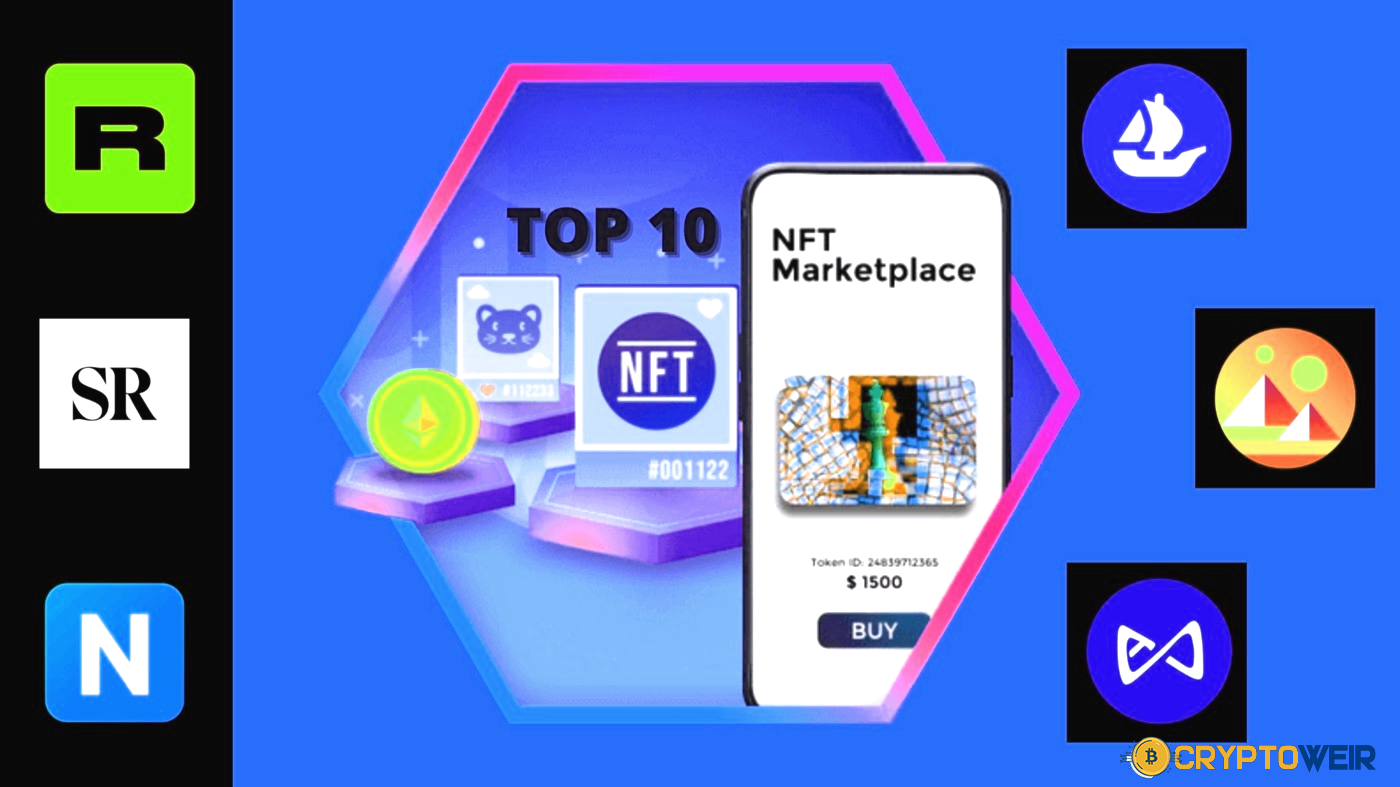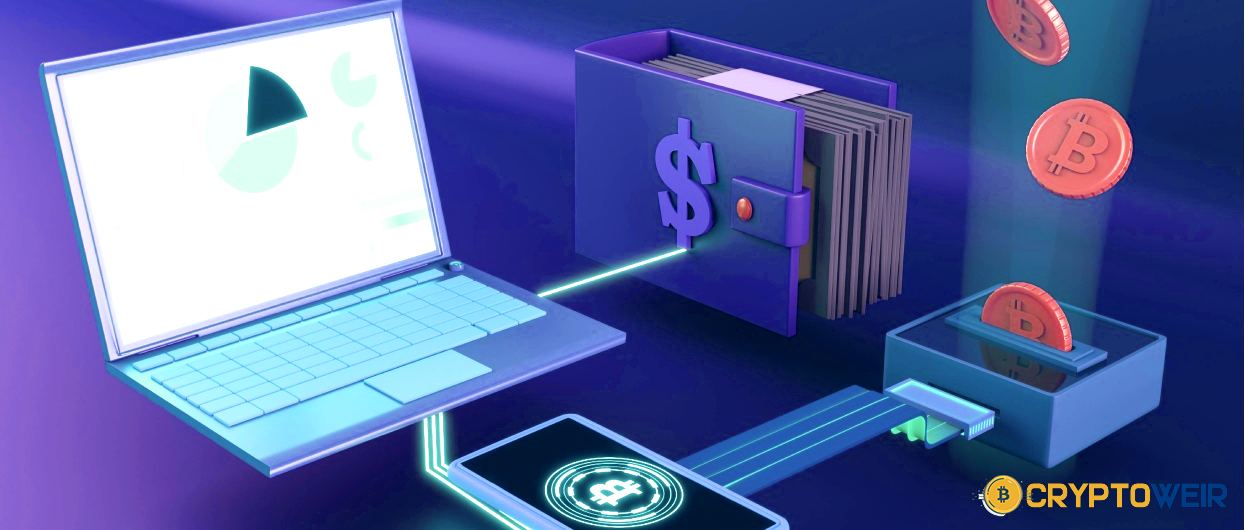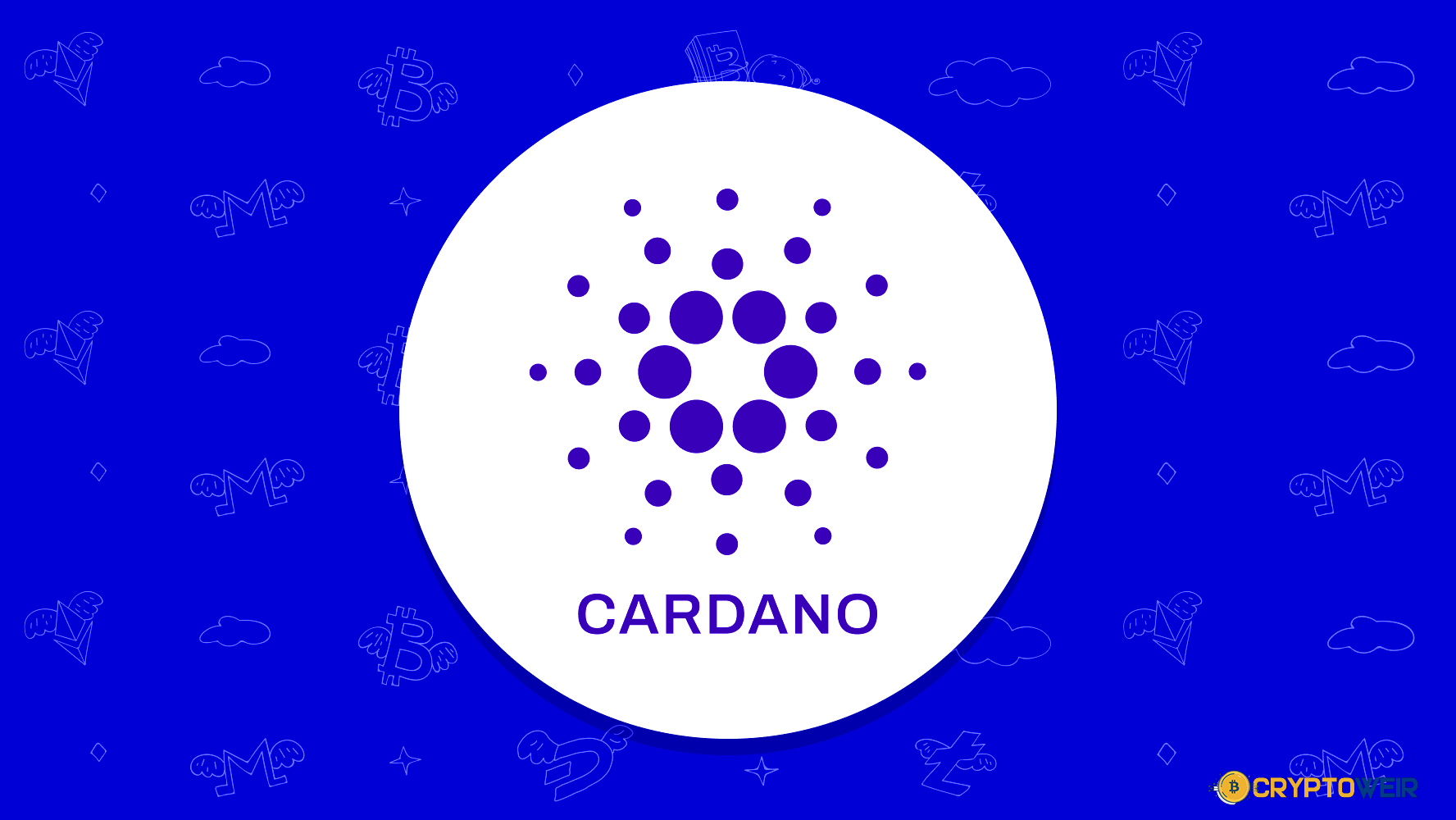10 Best NFT Marketplaces in 2022

In the history of art, 2021 could be seen as a turning point. Historians might say that 2021 was the year that NFTs really took off around the world. NFTs are starting to be worth a lot of money that is hard to believe. In January 2021, the total sales of non-fungible tokens (NFTs) on the six largest marketplaces that cryptoart.io tracked came to just under USD 12 million. This had grown to more than USD 200 million by March 2021. In just two months, the number has grown by sixteen times. The scary thing about all of this is that NFTs are still a new part of the decentralized ecosystem. In 2009, Bitcoin was born. Since 2017, people have been able to use NFTs.
After all that, what are the best NFT markets out there right now?
This question has no right answer. Since the space is so new, the marketplaces are trying out different ways to show off their NFTs. Instead of a clear order, this list of top NFT marketplaces shows the pros and cons of some of the biggest marketplaces. Even though these marketplaces will be judged on their own merits, they were chosen because of how many people use them and how much money they handle. In other words, these were chosen based on mostly objective criteria, but they were judged based on how they made us feel.
Here, we’ll divide the ten chosen markets into four groups:
- Open marketplaces
- Curated marketplaces
- Collectibles marketplaces
- Games marketplaces
In open marketplaces, you can find just about anything, from art to music files to collectibles to game items. This makes it easier for anyone who wants to get into the NFT space to use these NFT marketplaces. Collectibles are groups of non-fungible tokens that all have the same brand, like CryptoPunks. All of the CryptoPunks in the collectibles market are made in the same style, but they have different faces and colors. The games marketplaces section will have NFT marketplaces that are driven by assets bought on gaming apps.
Open Marketplace NFTs
1. OpenSea
OpenSea is often thought of as the first NFT marketplace, and it claims to be the largest one right now. Analytics from DappRadar agree. In the last 30 days, or March 2021, OpenSea has had the most money going through it than any other general market.
The interface is calming to use as the white background and blue make the links pleasant to engage in. For being perhaps the oldest open marketplace around, the user interface is surprisingly intuitive. OpenSea is also good for people who are just starting out because the tutorials are easy to understand. If you use the platform, you can learn a lot about how the NFT marketplaces work.
You don’t have to pay gas fees (transaction fees) every time you mint an NFT for a collection. Instead, once you start selling on the platform, it will ask you to pay a one-time gas fee. When someone buys your art, they have to pay for the gas costs.
The most royalties you can get per item are 10%, which is less than what you can get on a platform like rarible, where you can get up to 30%. Though that might not be a bad thing, if the royalties are too high, an investor might not be interested in buying your work.
Also, you can add items from other platforms like Mintable and Rarible to OpenSea, making it a true “open sea” in that way.
2. Rarible
For an open marketplace, they have the highest amount of users by far and for a good reason. When you type in the URL for Rarible, the marketplace comes up right away. On OpenSea, you have to click the “Explore” button to see what people are bidding on. Rarible has a Pop-style user interface that makes it feel like a fun place to be. This is emphasized by the yellow color scheme, which makes the platform look fast, busy, and laid-back. It doesn’t think too much of itself.
You can also see the day’s top sellers and some advertised NFT prospects at the top, which makes it easy to start using the market right away. This makes it easy to sell, which is probably a big reason why there are so many users. Also, sometimes famous people like Mark Cuban and Lindsey Lohan are added to the mix. It gives the average user a sense of comfort in the NFT space. It has less to do with being on the cutting edge of technology and more to do with having fun with a group of artists.
To make NFTs on the platform, though, you need to pay gas up front. If you’re just starting out, this could be very expensive. On a busy day, you might need USD 100 worth of ETH just for transactions. On the other hand, you can set really high royalties, up to 30%. If you are sure that the value of your NFT will stay high even if the royalties are high, this could be how you want to mint your NFTs.
Curated Marketplaces
3. Foundation
Foundation is not your average curated marketplace. On Foundation, the community votes for the artworks that will appear on the application, making it more peer-to-peer, like the technology that NFTs are founded on. To apply to become an artist, you have to create an account and add your name to the Community Upvote. After this, your fate will be decided on how the community votes on your art. If you want to vote once you’re a verified member, you log in, check out the creator list, and then give support to the artists you prefer. Foundation aims to put “power in the hands of creators.” As of now, it’s not completely user-curated, but it aims to be fully peer-to-peer once the community grows. Although its user base is still growing, it has a really high monetary volume.
The user interface is black and futuristic. The images are large, clear, and professional. The top-left corner has black, solid shapes: a triangle, circle, square. Underneath each NFT up for bidding is a solid black bar, with each auctioned NFT spaced apart well. The minimalist, black aesthetic definitely makes the platform look cutting-edge and professional.
One possible drawback of a purely user-curated platform is that there could be a dominant style that pervades the space if all the users are on board. It could hamper the diversification of the platform. Then again, you could argue that this quality will help Foundation solidify a concrete, thematic style.
4. SuperRare
SuperRare was started in 2017 and is the first curated marketplace. It lives up to its name. Each piece of art is unique. This means that there is no other copy of the art you see. Hence: ‘super rare.’ People are told that the platform is like a mix of the famous high-end auction house Christie’s and Instagram. In a way, they do have this air, which has a lot to do with the fact that their writing is so good. There, we can see what the artists look like, how well-known they are, and what their stories are. This editorial gives the platform a strong, “high end” look and feel.
Instead of the community voting, an artist must send in their work, and the SuperRare staff will decide if it is good enough to sell. This means that the average level of art is very high. The way they live is based on their love of collecting. SuperRare thinks that collecting is a social activity that its users will take part in, and that the shared interest in collecting brings people together. The artist gets 85% of the commission from the first sale and the gallery gets 15%. From then on, 3% of the royalties go to the original artist.
The interface of SuperRare is simple and looks professional. Even so, it’s not as clean looking as Foundation. Even the name SuperRare doesn’t sound as fancy as Foundation. SuperRare is like saying “it goes without saying,” but the word “Foundation” has a more universal feel. Even so, SuperRare makes a good case as a cryptographic Christie’s because of how rare and well-known the artworks are. The mentioned article does a lot to improve SuperRare’s reputation.
5. Nifty Gateway
As the crypto art chart at the top of the article shows, Nifty Gateway has the best sales numbers of all the curated art marketplaces. Steve Aoki, Calvin Harris, Grimes, and The Weeknd are just a few of the big names whose art is being sold on Nifty Gateway.
Why is Nifty Gateway such a big deal in the world of NFT? Simple. You can use a credit card to pay. Users don’t have to set up a Metamask and pay with Ethereum, which makes it easier to understand. The platform takes care of bringing together centralized and decentralized processes. In this way, Nifty Gateway connects a large number of people to a world without a central government. Their goal is to help a billion people use NFTs.
Those who want a more pure decentralized world, on the other hand, might not like the idea of a huge marketplace where NFTs can sell art with a credit card. This makes it feel strange to own something on a decentralized network. Even though some big-name artists are on their platform, it doesn’t have as much of a “high-end” feel with just white space between each NFT. Still, Nifty Gateway is a great platform that has done a lot to bring NFTs to the attention of the general public.
Marketplaces for Collectibles
6. CryptoPunks
CryptoPunks are still some of the most valuable NFTs, even though there are only 10,000 of them. These simple, pixelated portraits were made by LarvaLabs and are valuable because they were some of the first NFTs on the Ethereum blockchain. Only nine rare “alien punks” exist. These editions were sold for less than USD 100 when they first came out. After four years, they are worth millions.
The website doesn’t have a lot of different things to buy, but it has a clear pink-violet color scheme. Some of these CryptoPunks can be found on OpenSea, but they are much easier to find on larvalabs.com. The thing is, just because they were a big change in the history of blockchain, this should be one of the best marketplaces in the world.
7. NBA Top Shot
NBA Top Shot is a relatively new NFT marketplace, but it already has over 340,000 users and is one of the most profitable ones. DappRadar says that NBA Top Shot has already made more than 180 million dollars in the last month. In comparison, Cryptopunks has made about USD 250 million worth of money. NBA Top Shot didn’t come out until the end of 2020. Since 2017, CryptoPunks has been around.
The look is much more modern than CryptoPunk, with 3D highlight reels of NBA moments being used as collectibles. The designs that Dapper Labs has made are beautiful and look like the future of NFT collectibles. The only problem would be for people who are very strict about decentralization and don’t think you should be able to buy them with fiat currency. Other than that, the layout and design are what you would expect from one of the most popular sports in the world.
8. Ether Cards
Straddling the line between art and card collectible, Ether Cards is highly original. The Ether Cards team is in charge of making sure that only the best artists are on the platform. EtherCards says that artists can “gamify” their art by turning it into trading cards with their own unique features. The website’s design is sleek and professional, and it can compete with anything else on the market right now.
All of the artists have well-written biographies that explain what they do and how they see it. They also put more emphasis on getting an owner’s whole set. Each card you have will have its own special qualities. Depending on what you get, you may be able to open different ones. If you have full sets of cards, you can also get bonuses. Even though the platform isn’t as easy to use for people who aren’t already interested in NFTs, it has given the NFT space new and unique ideas.
Games Marketplaces
9. Axie Infinity
If you like strategy games and cute creatures, Axie Infinity will be your cup of tea. In it, you can make a team of monsters, called Axie, and use your collected Axie cards to fight other monsters. You can even make a new Axie by breeding your own monsters. Once you know how the game works, you can use your cute creatures to fight against other players.
On the market, you can buy and sell Axie monsters, items, and plots of game land. People who aren’t usually interested in the decentralized world will be drawn to the platform because of how cute it is. The interface is easy to use because it has big buttons and a friendly look. Axie Infinity has become a well-known game and NFT marketplace thanks to its high number of sales and users.
10. Decentraland
Even though some people might disagree, Decentraland’s virtual reality world is a lot like a sandbox video game. In a sandbox game like Minecraft, you get a set of tools and rules that you can use to build the world however you want. You can buy plots of digital NFT land in Decentraland and build anything you want on them. Some players have built museums to show off their NFT art, put games on their land, or even made markets on them. Some users have also made a lot of money by buying digital land and selling it later. Yes, you can now buy and sell real estate online.
You might be wondering, “How can digital land be so valuable?” When a user enters this virtual world, they are automatically engaged and able to interact. If a business is advertising on it, you can go into their virtual building and talk to them from anywhere in the world. There will be features where you can click on billboard ads and be taken to the website of the advertiser. It could be argued that this ad is more interesting than walking by a huge billboard in the real world. You can do anything you can think of.
Still, the platform is pretty complicated, so people who aren’t used to sandbox-style worlds might find it hard to use. But users will be happy with the fact that they make the world, and the options are endless.






2 Comments